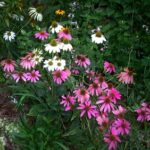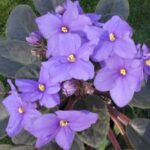As a garden writer, I’ve received lots of questions about the care of hibiscus plants indoors, especially over winter. There are numerous varieties of hibiscus but the most commonly grown indoors is Hibiscus rosa-sinensis, also known as Chinese hibiscus or Rose-of-China.
Growing Chinese Hibiscus
Chinese hibiscus, with its attractive flowers and glossy evergreen (in tropical climates) foliage, can only be grown outdoors in Zones 9-11. They are extremely sensitive to frost and cold temperatures. Therefore, most people grow them indoors as houseplants where they may spend their summers outside, returning indoors prior to cold weather. One thing to note is that hibiscus can be somewhat temperamental, so providing the appropriate indoor growing environment is important.
Outdoors the plants require full sun; therefore, inside they will need lots of bright light. Those with low light will fail to bloom or flourish. They also need fertile, well-draining soil, preferably compost enriched. This should be kept evenly moist. Chinese hibiscus plants thrive with indoor temperatures between 60 and 75 degrees F., along with high humidity. In lieu of a humidifier, you can group plants together or place them on pebble-filled trays of water to raise humidity levels. The plants also like regular monthly feedings of slow-release fertilizer (high potassium).
Common Problems with Chinese Hibiscus Plants
Thrips and gall midge are pests that commonly affect hibiscus buds. If your hibiscus plants are failing to bloom due to bud or flower drop, one of these insects may be to blame. Sap-sucking insects like aphids, whiteflies, spider mites, or mealy bugs often affect these plants as well. The use of neem oil is a safe and effective way to handle these pests. One of the best ways to control pests indoors is to make certain that you thoroughly examine and wash off the plants prior to bringing them back inside in fall.
Another common problem with hibiscus is yellowing or dropping of the leaves. This can be attributed to a number of things such as too much or too little watering, nutrient deficiencies, or stress. Acclimating hibiscus plants before bringing them in for winter or setting them out in spring can help reduce any stress that may cause leaf drop. Yellow leaves and dropping foliage is also a common, and quite normal, event when the plant is ready to enter its dormancy period. In order that Chinese hibiscus plants go dormant in winter, you must decrease water (only water when dry to the touch), stop fertilizing, and move to a cool, dark area. Once spring returns you can increase watering, resume fertilizing, and return the plants to a warm, well-lit location.
Pruning Indoor Hibiscus
Just like those grown year round outdoors, indoor hibiscus thrive with regular annual pruning. Not only does this stimulate budding on new shoots, but also encourages healthy growth and maintains an attractive appearance. While they can be pinched and deadheaded throughout the year, any heavy pruning should be left for spring. At this time you can cut the plants back by a third just above the nodes, leaving at least two or three on each branch for new growth.
Resources: personal experience





